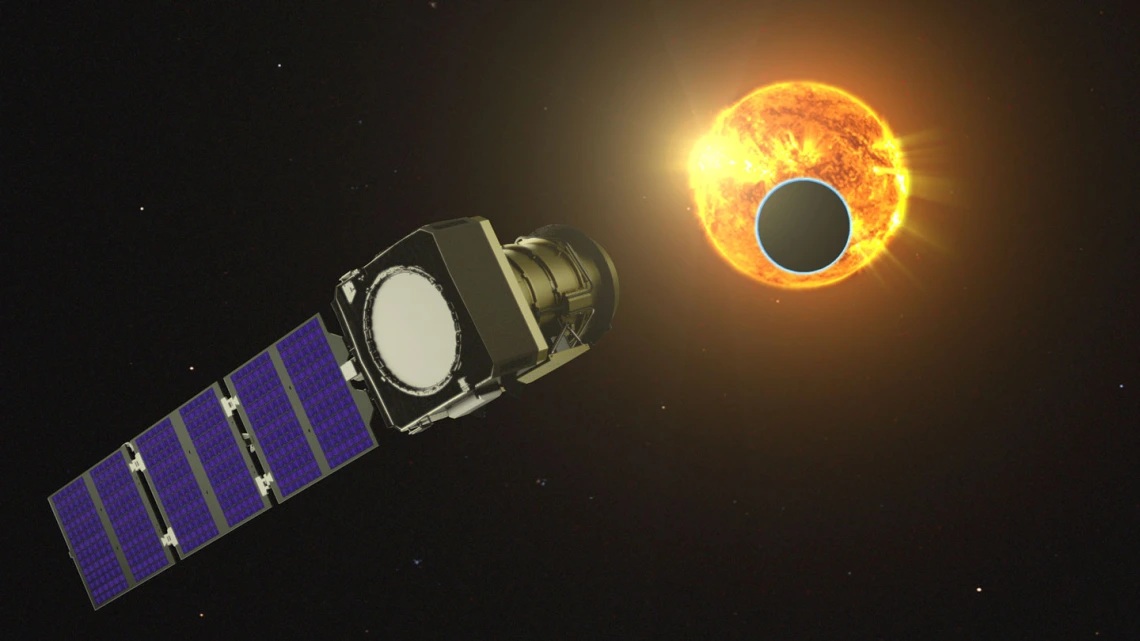

Johns Hopkins University (JHU) continues to pad its space community résumé with their interactive map, “The map of the observable Universe”, that takes viewers on a 13.7-billion-year-old tour of the cosmos from the present to the moments after the Big Bang. While JHU is responsible for creating the site, additional contributions were made by NASA, the European Space Agency, the National Science Foundation, and the Sloan Foundation.

Artist's impression of the Pandora mission observing a transiting exoplanet. Credit: NASA’s Goddard Space Flight Center/Conceptual Image Lab
Pandora, NASA’s newest exoplanet mission, is one step closer to launch with the completion of the spacecraft bus, which provides the structure, power, and other systems that will enable the mission to carry out its work. Pandora is a small satellite that will provide in-depth study of at least 20 known planets orbiting distant stars in order to determine the composition of their atmospheres — especially the presence of hazes, clouds, and water. This data will establish a firm foundation for interpreting measurements by NASA’s James Webb Space Telescope and future missions that will search for habitable worlds. Astronomers view the presence of water as a critical aspect of habitability because water is essential to life as we know it. But variations in light from a planet's host star can mask or mimic the signal of water. Separating these sources is where Pandora will shine. Using a novel all-aluminum, 45-centimeter-wide (17 inches) telescope, Pandora’s detectors will capture each star’s visible brightness and near-infrared spectrum at the same time, while also obtaining the transiting planet’s near-infrared spectrum. This combined data will enable the science team to determine the properties of stellar surfaces and cleanly separate star and planetary signals. Over the course of its year-long prime mission, Pandora will observe at least 20 exoplanets 10 times, with each stare lasting a total of 24 hours. Each observation will include a transit, when the exoplanet passes in front of its star as seen from our perspective, which is when the mission will capture the planet’s spectrum. Music credit: “Mesmeric Thoughts,” Andrew Michael Hewitt [PRS], Universal Production Music Credit: NASA’s Goddard Space Flight Center Producer: Scott Wiessinger (eMITS) Science writers: Francis Reddy (University of Maryland College Park) Scientist: Ben Hord (NASA/GSFC) Scientist: Elisa Quintana (NASA/GSFC) Animator: Jonathan North (eMITS) Animator: Chris Smith (KBR) This video can be freely shared and downloaded at While the video in its entirety can be shared without permission, the music and some individual imagery may have been obtained through permission and may not be excised or remixed in other products. Specific details on such imagery may be found here: For more information on NASA’s media guidelines, visit . If you liked this video, subscribe to the NASA Goddard YouTube channel: subscribe to the NASA Goddard YouTube channel: Follow NASA’s Goddard Space Flight Center · Instagram · Twitter- NASA GODDARD · Twitter-NASA GODDARD PICS · Facebook: · Flickr
Since the early 1990's, astronomers have known that extrasolar planets, or "exoplanets," orbit stars light-years beyond our own solar system. Although most exoplanets are too distant to be directly imaged, detailed studies have been made of their size, composition, This video is public domain and can be downloaded at: · Facebook: · Twitter- NASA GODDARD